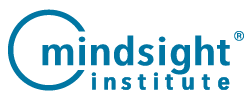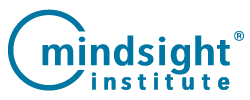Brainstorm Intensive: A Practical Skill Set for Working with Adolescents and Understanding Adolescent Brain Development
- 5 hours
- 5 Lesson(s)
- All Levels
- Overview
- Topics
- Learning Objectives
- CE Credit
- FAQ
Adolescence is an incredible and unique period of life, characterized by significant inner and outer changes. In order to support adolescents most effectively, we can be greatly helped by first comprehending why these shifts occur. In this five-part video lecture, Dr. Siegel dives deeply into the science that underpins the approach to adolescence detailed in his New York Times bestselling book Brainstorm. Throughout this course, you will explore essential aspects of the developing mind, such as:
- The remodeling period of the adolescent brain and how experience shapes the brain
- The latest attachment research and its implications across the lifespan
- Strategies for maintaining presence and resisting reactivity in the face of challenges
- Exercises for developing and teaching mindsight for greater insight and empathy
Not only does this course offer a scientific foundation to better understand the nature of adolescence, but it provides a practical skill set for managing life’s issues with consciousness and compassion.
Lecture 1: The ESSENCE of Adolescence
Explore the ESSENCE of adolescence–the Emotional Spark, Social Engagement, Novelty-seeking, and Creative Exploration that occurs in this point of development.
Lecture 2: Your Brain
Dr. Siegel focuses on the critical neurological changes that occur in adolescence and the resulting changes in behavior, internal experience, and challenges to integration.
Lecture 3: Your Attachments
Learn how early life experiences–and how we make sense of these experiences–influence our mind and future relationships.
Lecture 4: Staying Present Through Changes and Challenges
Dr. Siegel describes how adolescents and adults can learn to cultivate presence and engage in reflective dialogues to better understand each other and connect.
Lecture 5: Mindsight Tools and Exercises
Dr. Siegel provides insight and practices to help cultivate mindsight abilities, which can be used in personal and professional contexts.
Online Q&A (This content is not applicable for CECs.)
Previously recorded 90-minute Q&A session where Dr. Siegel answers questions from previous students of the course
Learning Objectives for Participating Health Care Professionals
At the end of the program, you will be better able to:
- Describe how genetics, epigenetics, experiences, and our adaptation to experiences shape our development
- Describe the evolutionary purpose of the remodeling period of the adolescent brain and how this process relates to the adolescent mind
- Describe the changes that occur in the emotional, social, motivational, memory, appraisal, and reward systems in adolescent development
- Assess the key processes of neuroplasticity and how to take advantage of this unique quality to promote well-being
Continuing Education content level: All levels
*Please note:
- Please visit our Continuing Education Credit information page for full CEC Provider information, including license applicability, attendance requirements, cancellation, and grievance policies.
- For those licensed by a different board, please contact your licensing board directly to verify that the credits offered by the Mindsight Institute will be accepted. The Mindsight Institute does not confirm the applicability of credit for those with licenses different than those listed on our CEC information page.
- Credit is awarded for recorded instructional time only and does not include optional live Q&A sessions, if available.
- SCA is a provider approved by the California Board of Registered Nursing, Provider Number CEP16887 for 5 contact hours.
Continuing Education Credit (CEC) Information
Teachings are appropriate for health care professionals, as well as the general public.
By understanding the remodeling of the adolescent brain, professionals working with adolescents will be better able to both make sense of changes in youth behavior and to offer interventions based on a scientific understanding of brain development. Four key changes in the adolescent brain’s functioning during this important period of life are reviewed and include an emotional spark, social engagement, novelty-seeking, and creative explorations. By synthesizing these findings in clinical assessment and treatment planning, therapists are able to offer a connecting and comprehensive approach to psychotherapy that can engage teens and older adolescents and empower them to help cultivate the neural integration at the heart of remodeling during this time of their lives.
This program offers 5 homestudy CE credits for psychologists, and California licensed MFTs, LCSWs, LEPs, LPCCs, nurses, and chiropractors. Please see our Continuing Education Credit information page for more information and to determine if your association or board will accept credits offered by Mindsight Institute and our co-sponsor, the Spiritual Competency Academy (SCA).
*Please note:
- Please visit our Continuing Education Credit information page for full CEC Provider information, including license applicability, attendance requirements, cancellation, and grievance policies.
- For those licensed by a different board, please contact your licensing board directly to verify that the credits offered by the Mindsight Institute will be accepted. The Mindsight Institute does not confirm the applicability of credit for those with licenses different than those listed on our CEC information page.
- Credit is awarded for recorded instructional time only and does not include optional live Q&A sessions, if available.
- SCA is a provider approved by the California Board of Registered Nursing, Provider Number CEP16887 for 5 contact hours.
How long will I have access to the course?
How do I gain access to my course materials and get started?
If you have not previously registered for a Mindsight course, you will receive an email (upon enrollment) notifying you of your login credentials, which you’ll use to enter your profile and view your online library.
A “Welcome” letter will also be delivered to you: It contains all of the course-access instructions and logistical details that you’ll need moving forward, and you’re always encouraged to reach out to us at info@mindsightinstitute.com with any further questions.
Are the course materials downloadable?
Our video content cannot be downloaded, but it can be streamed and viewed on any computer, tablet, or mobile device at your convenience. All notes, handouts, and study materials associated with the course, however, are downloadable and printable.
I don’t have a background in biology or science. Will I still be able to understand the content of this course and benefit from it?
Yes! Dr. Siegel has a unique ability to make complex scientific concepts accessible, and our courses are designed to resonate with wide audiences. This workshop has no prerequisites, and a scientific background is not necessary to find value in its teachings: We’re confident that you’ll walk away with plenty of knowledge to apply in your personal and professional life.
Who can I contact for further information?
If you have any additional questions, please don’t hesitate to reach out to the Mindsight Team at info@mindsightinstitute.com. We’re always happy to help!



